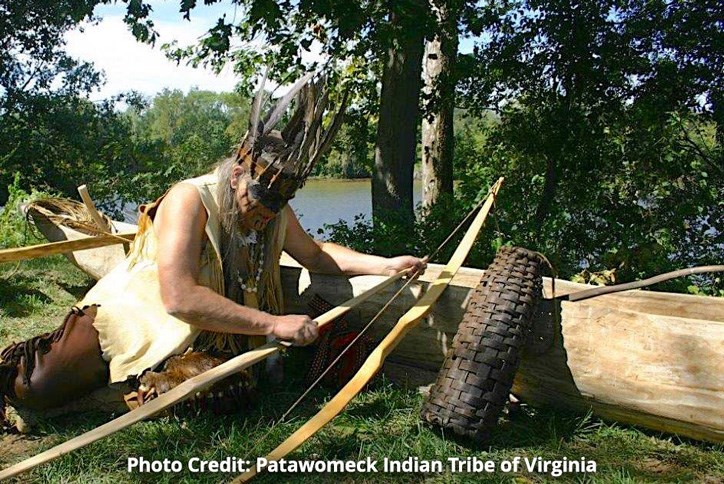
01 July . 2024
Indigenous People of Northern Virginia
Embrey Mill, Stafford County, and Northern Virginia in general have always been popular places to live, even before they had those names.
In the times when the “United States” wasn’t even a thought, many Indigenous Peoples called this area home.
Their history stretches back thousands of years and adds even more richness to our own.
At Embrey Mill—and Cascades at Embrey Mill, our 55+ section—we embrace our collective history, celebrating and supporting each other as we form a tight community.
So, to fuller understand the connections we have to this land’s history, here’s a little introduction to a few of the Indigenous Peoples from Northern Virginia, and one that lived right here in Stafford.
Tutelo
According to their oral history, the Tutelo originated in what’s now called Ohio. When they moved to Virginia, their settlements stretched north and south across the whole state, dipping a little into North Carolina and pushing across the Potomac River into Maryland.
The Tutelo spoke a dialect of the Siouan language, and were known to be expert horticulturists. One of their famed crops was strawberry corn, a rosy-colored variety that was luckily protected and kept alive by other tribes and current farmers so we can still enjoy its beauty and flavor.
In the 18th century, as many tribes were being displaced, the Tutelo joined with the neighboring Saponi. They then called themselves the Nahyssan.
Saponi
The Saponi were close neighbors with the Tutelo, most likely having a shared or very common Siouan language. Their settlements seem to have extended more west than the Tutelo, however, stretching into what is now West Virginia.
Also similar to the Tutelo, the Saponi traced their lineage through the mother’s side. John Smith recorded meeting members of the Saponi tribe in 1607.
Once they later joined with the Tutelo, however, the Saponi began to leave the Virginia area. They moved south into now North Carolina and then north into New York. By 1740, many of the Saponi (and Tutelo) had migrated to Pennsylvania, where they were later selected to join the Six Nations of the Iroquois Confederacy.
Patawomeck
The Patawomeck people lived not just in Northern Virginia, but right here in what’s now called Stafford County. They lived along the Potomac River (“Patawomeck” being another spelling of “Potomac”). Speaking an Eastern Algonquian language, the Patawomeck aligned more with their neighbors to the east—the Powhatan Confederacy—than with the Tutelo and Saponi to their west.
But even that alliance was tested as, in 1613, they aided the English in kidnapping one of the daughters of Chief Powhatan. Her birth name was Amonute, but most people today know her by her nickname: Pocahantas.
Luckily for us, the Patawomeck Indian Tribe of VA has taken it as their mission to preserve their history. Get ready to step back in time when you visit their Patawomeck Museum and Cultural Center in Fredericksburg. Set on 17 acres, you and your family can explore all the stations in their Living History Village and learn about these indigenous people. Experience a connection going back 10,000 years as you investigate thousands of artifacts that tell the Patawomeck’s story. The story of Embrey Mill before it was Embrey Mill.
Connect to History and Each Other at Embrey Mill
Stafford County, Virginia, is a region steeped in rich history, particularly when it comes to the Indigenous Peoples. These people thrived along the banks of the Potomac and Rappahannock Rivers, using the area’s plentiful natural resources for hunting, fishing, and agriculture. The Patawomeck, in particular, had a well-established society with intricate social structures, traditions, and a deep spiritual connection to the land.
These people left an indelible mark on the region's history and culture. Their legacy can be seen in the place names, artifacts, and the rich oral histories passed down through generations. And Embrey Mill has the unique opportunity to honor and connect with this historical legacy.
Building a sense of community in Embrey Mill goes beyond the present: It involves embracing the past. By weaving this rich historical tapestry into the fabric of our community life, Embrey Mill creates a space where past and present meet, fostering a deeper connection among all of us to the land we call home.
